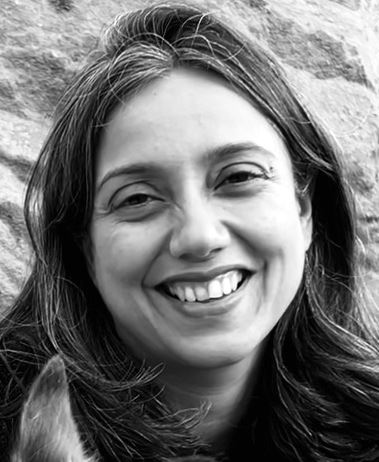 back to fall 2025 newsletter
back to fall 2025 newsletter
by Kusum Punjabi, AMFT, Director of DEI and Claude AI
September 21 marked the International Day of Peace, and as we move into November, I find myself still sitting with questions it raised—perhaps more urgently than ever.
We are living through profoundly polarizing times. Wars rage across multiple continents. Political divisions fracture families. Social media amplifies outrage. In our therapy rooms, we witness the toll—clients wrestling with estrangement, workplace hostility, grief over global violence, fear about their fundamental rights and safety. As therapists, we’re not immune to this polarization or this pain.
I’ve been sitting with Gandhi’s concept of satyagraha—“truth-force” or “holding truth.” Gandhi didn’t teach peace as tranquility; he taught it as the courageous act of holding truth while maintaining deep respect for everyone’s humanity, including those who oppose you. What strikes me is how fundamentally uncomfortable this practice is.
That tension—between speaking truth and preserving relationship—lives in my body daily.
What moves me is discovering how this struggle echoes across faith traditions. Jewish teaching speaks of tikkun olam, “repairing the world”, but doesn’t promise it will feel good. Buddhism emphasizes Right Speech—truthful and kind, simultaneously—which is far harder than being just one or the other. Indigenous wisdom teaches seven-generation thinking, and I feel the weight of that responsibility alongside my own limitations.
I notice my own contradictions. I can write clearly about systemic oppression in theory, but when a friend makes a problematic comment, I freeze. I understand that institutional policies can harm the very people we serve, yet challenging those policies requires energy and political capital I don’t always have. I know that silence has consequences, yet I choose it more often than I’d like to admit.
Gandhi’s framework helps me see that this discomfort isn’t weakness—it’s the actual terrain of peacemaking. He faced the British Empire not with certainty but with commitment to hold truth even while trembling. His satyagraha wasn’t about having all the answers; it was about refusing to look away from injustice while also refusing to dehumanize those perpetuating it.
Some days I manage to speak. I name a systemic reality rather than only focusing on individual responses. I ask a question that opens space for reflection. I document a barrier I’m observing. These feel like small acts, insufficient to the scale of what I’m witnessing. Other days I stay quiet, and then I’m left with that familiar companion: guilt. I replay the moment, imagine what I could have said, judge myself for cowardice.
Gandhi’s wisdom suggests something different—that even bearing witness, even feeling the tension of what’s unspoken, is part of the practice. Not as an excuse for inaction, but as honest acknowledgment that this work is genuinely difficult.
I’m learning that holding truth with compassion includes holding my own struggle with compassion. I won’t always speak. I won’t always act. I will sometimes choose comfort over courage. And somehow, imperfectly, I keep returning to the question: What does non-violent resistance to harm look like in my particular role, with my particular limitations, on this particular day?
Peace, as Gandhi understood it, isn’t the absence of conflict—internal or external. It’s the willingness to stay present to both truth and love, even when they pull in seemingly opposite directions. Especially then.
This article was co-authored by Kusum Punjabi and Claude (Claude Sonnet 4), an AI assistant from Anthropic. Claude assisted with brainstorming, research, and drafting, while conceptualization and all final editorial decisions were made by the human author.
